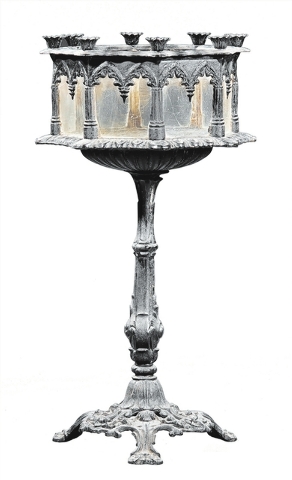Terrariums sprouted as a result of polluted air
House plants were popular with our ancestors, but indoor plants took a lot of work. No bug spray, no packaged topsoil or plant food, not even a good selection of pots was available.
In 1829, Dr. Nathaniel Bagshaw Ward of London invented the “Wardian case.” His ferns were dying in London’s smoke-filled air. Then he noticed that some of the sealed test tubes he was using to germinate seeds also held other seedlings starting to grow. So he created a large glassed-in enclosure to grow his ferns.
The Wardian case, named after the doctor, soon became popular not only with botanists, but also with the public. They were featured in many homes. At first, ferns were the most popular plant to grow in the cases, but scientists and explorers also used them to bring new plants from other continents. It is said that tea and rubber plants made the ocean trip to new countries in the cases, were planted and started new agricultural industries.
The Wardian cases used in homes were made of glass and iron. Some sat on a matching table or stand, and some were made to look like small houses. It was the first terrarium — a closed space to let plants grow — and the condensed moisture kept them from drying out.
Vintage Wardian cases are not easy to find, but they’re available. Copies were made, too, and they’re still being made. A case made by the well-known American firm of J.W. Fiske, a Victorian maker of iron furniture and garden fountains, sold recenlty for $5,795 at Neal Auction Co. in New Orleans.
Q: We have an old wooden dining room set that includes a table with one leaf, four chairs and a china cabinet. The only mark I can find is “Jefferson Woodworking Co.” on the table’s extension rails. History and value?
A: Jefferson Woodworking Co. was in business in Louisville, Ky., in the late 1910s into at least the early 1920s. It did not make your table. It made table extension rails for various furniture manufacturers.
Still, your set is close to 100 years old and could sell for more than $500 if it’s in excellent condition.
Q: My Mary Gregory pitcher is titled “A Clear Day for Flying.” But it’s missing some of the painted artwork that should be on the piece. It has the boy flying a kite, but it’s missing the sky and ground art as well as the artist’s signature.
A: Your pitcher isn’t old. It was made in 2008 by the Fenton Art Glass Co. of Williamstown, W.Va. Fenton was one of several U.S. glassmakers that produced “Mary Gregory” glassware beginning in the late 1950s.
Everyone used to think that old Mary Gregory glass was named for an employee at the Sandwich Glass factory in Massachusetts, but researchers have discovered that the style — white paintings of children on clear or colored glass — actually originated in Bohemia in the late 1800s. The style continues to be popular, and Fenton made 1,250 limited-edition pitchers like yours in 2008.
We have seen the pitcher for sale at prices ranging from $100 to $125. If the paint on yours has simply worn off, it would sell for less. If it’s an early prototype by Sue Jackson, the Fenton artist who designed the limited editions, it might sell for a little more than a limited edition.
Q: I have a General Electric Youth Electronics clock radio. My aunt and uncle gave it to me many years ago. The numbers on the clock face have 12 different Disney characters, and there are two dials with characters on them for setting the time and alarm. The radio dial is a big, hard plastic Mickey Mouse face. Below the dial it reads “Walt Disney Productions.” Can you give me any information as to age and value?
A: Your Mickey Mouse radio is more than 40 years old. General Electric was licensed to make radios for Disney from 1970 to 1975. The radio sells for less than $20 unless you have the original box. The box adds about $50.
Q: I have a silver tea service that includes a teapot, sugar bowl and creamer marked “Tiffany & Co., quality 925-1000.” The set’s tray is marked “Dixon & Sons, Sheffield.” Can you tell me the value of this tea set?
A: The tray was not originally part of the set, since it was made by a different company.
Charles Lewis Tiffany opened a retail store in New York in 1837. The name of the store became Tiffany & Co. in 1853. It’s still in business. Tiffany & Co. set the standard for sterling silver in the United States, which is 92.5 percent silver.
James Dixon began working in silver in Sheffield, England, in 1806. His company was called “James Dixon & Sons” by 1835. The company made Britannia, nickel silver and silver-plated wares. It was out of business by 1992.
The quality numbers on the teapot, sugar and creamer indicate they are sterling silver, but the tray is silver-plated. The name “Tiffany” adds value to just about anything. Your set might be worth close to $1,000.
Terry and Kim Kovel’s column is syndicated by King Features. Write to: Kovels, (Las Vegas Review-Journal), King Features Syndicate, 300 W. 57th St., New York, NY 10019.

















